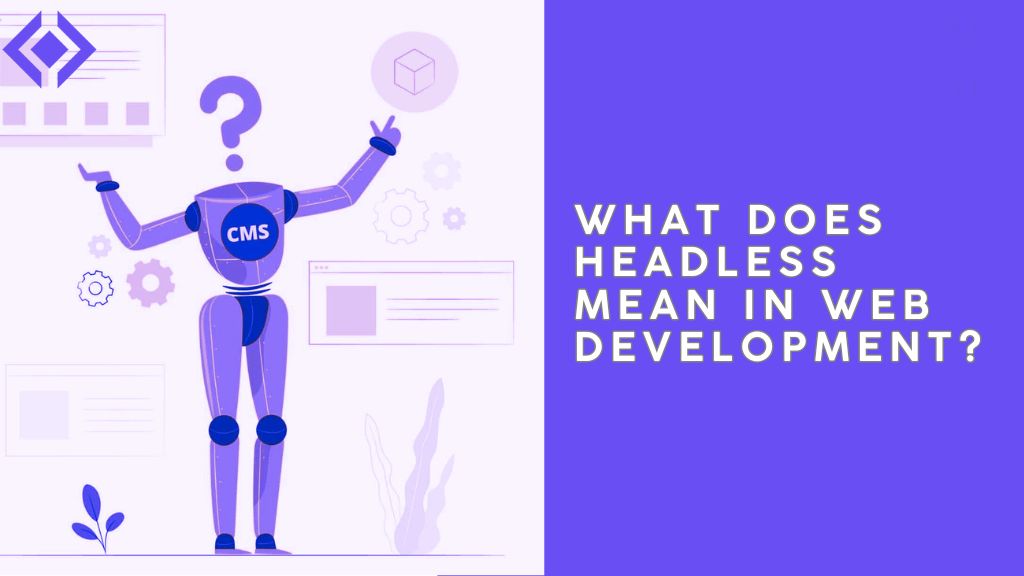Subtotal $0.00
Web development is filled with terms that may seem confusing at first, and “headless” is one of them. While it might sound like something out of a sci-fi movie, “headless” in web development refers to a powerful and innovative architectural approach that offers flexibility and scalability for modern applications. Let’s dive deeper to understand what headless means, how it works, and why it’s becoming a game-changer in the industry.
Introduction: What Does Headless Mean in Web Development?
Headless web development refers to the decoupling of the front-end (the “head”) and back-end of a website or application. This approach allows developers to manage content on the back-end without being tied to a specific front-end framework or delivery method.
Imagine your favorite CMS (content management system) as a restaurant kitchen. Traditionally, it handles both the cooking and the presentation (e.g., the food and the plate). In a headless setup, the kitchen still cooks the food but lets the waiter decide how to serve it—on a plate, in a box, or even digitally!
Key Benefits of Headless Web Development
1. Enhanced Flexibility
With headless architecture, developers can use any front-end framework or technology to present the content. This flexibility is perfect for creating tailored user experiences across multiple platforms.
2. Omnichannel Delivery
Headless systems make it easier to deliver content to various channels, such as:
- Websites
- Mobile apps
- Smart devices (IoT)
- Digital signage
3. Faster Performance
Decoupling the front-end and back-end often leads to better performance because the content is served through APIs, which are optimized for speed and scalability.
4. Future-Proofing
Since the back-end and front-end are separate, updates or changes to one side don’t disrupt the other. This means businesses can adopt new technologies without overhauling their entire system.
How Does Headless Web Development Work?
1. The Back-End (Content Management System)
In a headless setup, the back-end CMS is responsible for storing and managing content. Popular headless CMS platforms include:
- Strapi
- Contentful
- Sanity
The back-end is connected to an API that delivers content to the front-end.
2. The API (Application Programming Interface)
APIs act as a bridge between the back-end and the front-end. They deliver content in formats like JSON or XML, allowing the front-end to fetch and display it as needed.
3. The Front-End (Presentation Layer)
The front-end is built using frameworks and libraries such as:
- React
- Angular
- Vue.js
Developers have complete freedom to design user interfaces that fit specific platforms or audiences.
Practical Applications of Headless Web Development
1. E-Commerce
Headless architecture is a natural fit for e-commerce platforms. It allows businesses to:
- Provide seamless experiences across web, mobile, and in-store kiosks.
- Quickly adapt to market trends with minimal disruption.
Popular platforms like Shopify and BigCommerce now offer headless options.
2. Content-Driven Websites
Media and publishing companies benefit from headless systems by delivering content to multiple devices, from desktop browsers to smart TVs.
3. IoT and Emerging Technologies
Headless systems can integrate with smart devices, enabling content delivery to wearables, voice assistants, and augmented reality applications.
Challenges of Headless Web Development
1. Complexity in Setup
A headless system requires developers to manage multiple layers, which can increase complexity.
2. Cost
Initial implementation and ongoing maintenance can be more expensive compared to traditional systems.
3. Requires Skilled Developers
Since the front-end and back-end are separate, developers must be proficient in both areas to ensure seamless integration.
Why Choose Headless Web Development?
1. Scalability
Headless systems can handle high traffic and growing user demands with ease, making them ideal for enterprises.
2. Customization
For businesses needing unique, branded experiences, headless offers unmatched customization options.
3. Speed and Responsiveness
Headless systems often deliver content faster, improving user satisfaction and engagement.
Real-World Example of Headless Web Development
Case Study: An E-Commerce Brand
A global retail company wanted to unify their shopping experience across web, mobile, and in-store kiosks. By switching to a headless architecture, they achieved:
- Faster page load times.
- A consistent brand experience across platforms.
- Easier integration with third-party tools for analytics and marketing.
Conclusion: Is Headless Web Development Right for You?
Headless web development offers immense benefits for businesses looking to create scalable, customizable, and future-proof solutions. However, it’s not a one-size-fits-all approach. Companies must weigh the pros and cons and assess their technical capabilities before diving in.
Actionable Insights
- Evaluate Your Needs: Determine if your project requires the flexibility and scalability offered by a headless system.
- Choose the Right Tools: Explore platforms like Contentful, Strapi, or Sanity to find a headless CMS that fits your goals.
- Upskill Your Team: Ensure your developers are familiar with both API integration and front-end frameworks.
By understanding and leveraging headless web development, you can create experiences that stand out in a crowded digital landscape.

